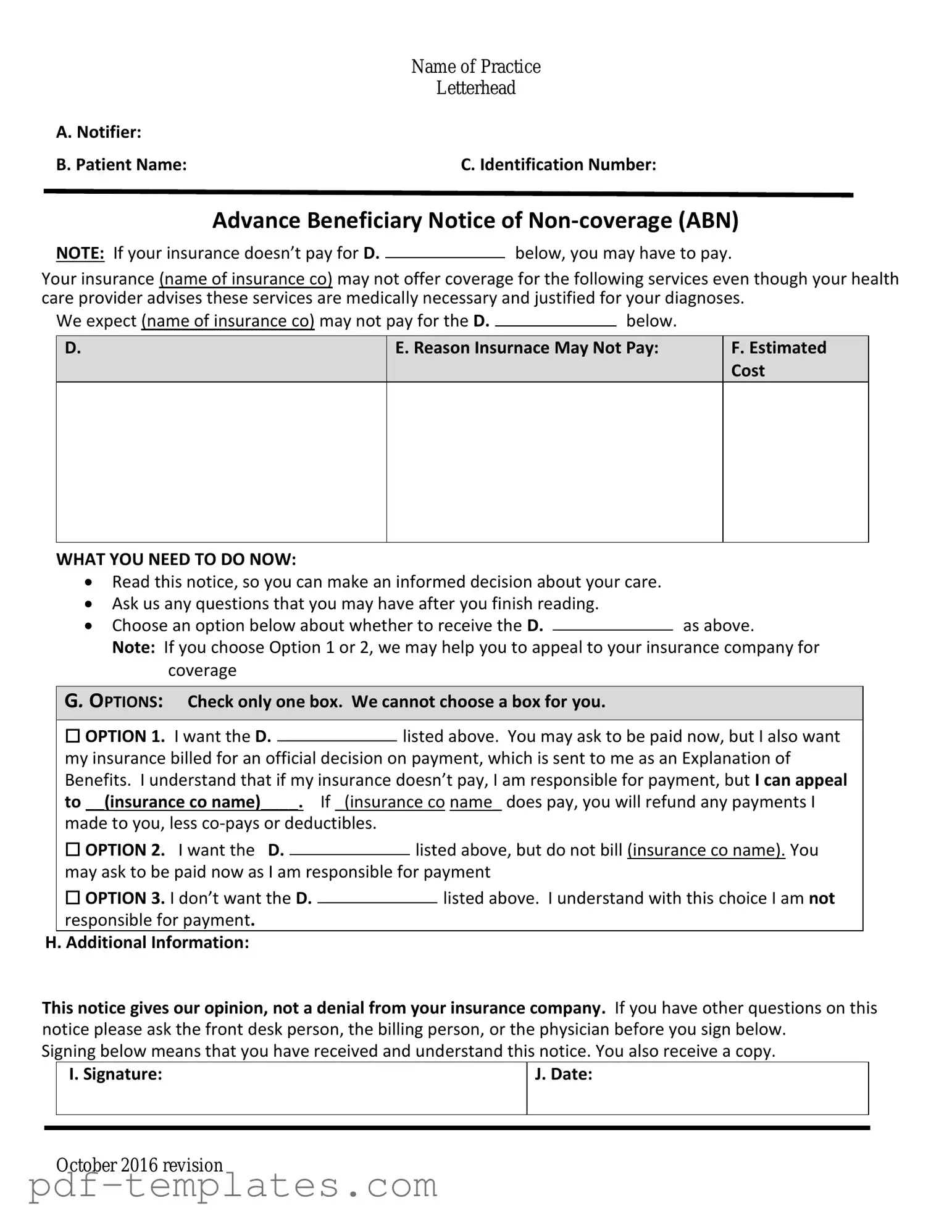The Advance Beneficiary Notice of Non-coverage, commonly referred to as the ABN, plays a crucial role in the healthcare system, particularly for Medicare beneficiaries. This form serves as a notification to patients when a healthcare provider believes that a service or item may not be covered by Medicare. By providing this notice, healthcare providers ensure that patients are informed about potential out-of-pocket costs before receiving care. The ABN outlines the specific service in question, explains why it may not be covered, and offers patients the opportunity to make informed decisions regarding their treatment options. Additionally, the form includes a section for patients to indicate whether they wish to proceed with the service despite the potential lack of coverage. Understanding the implications of the ABN is essential for beneficiaries, as it empowers them to take control of their healthcare choices and financial responsibilities. Moreover, the ABN process is designed to promote transparency between patients and providers, fostering a more informed healthcare experience.
